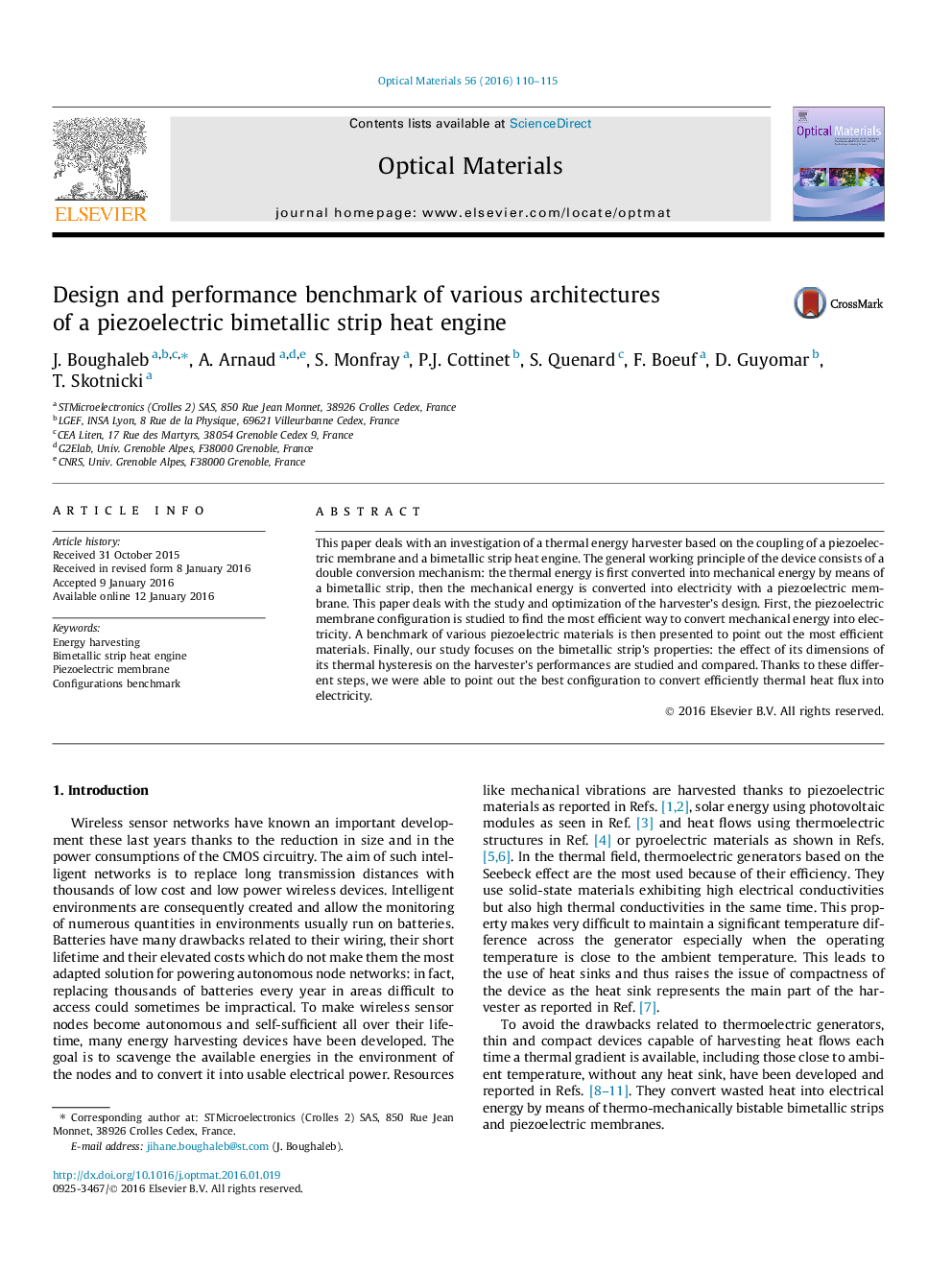| Article ID | Journal | Published Year | Pages | File Type |
|---|---|---|---|---|
| 1493269 | Optical Materials | 2016 | 6 Pages |
•A complete benchmark of a thermal energy harvester and each of its components is established.•The most adapted piezoelectric membrane for our harvester is pointed out.•A study carried out on different bimetallic strip heat engines is also established.•Different devices architectures are proposed and tested.•All the different architectures are experimentally tested to find the most efficient architecture.
This paper deals with an investigation of a thermal energy harvester based on the coupling of a piezoelectric membrane and a bimetallic strip heat engine. The general working principle of the device consists of a double conversion mechanism: the thermal energy is first converted into mechanical energy by means of a bimetallic strip, then the mechanical energy is converted into electricity with a piezoelectric membrane. This paper deals with the study and optimization of the harvester’s design. First, the piezoelectric membrane configuration is studied to find the most efficient way to convert mechanical energy into electricity. A benchmark of various piezoelectric materials is then presented to point out the most efficient materials. Finally, our study focuses on the bimetallic strip’s properties: the effect of its dimensions of its thermal hysteresis on the harvester’s performances are studied and compared. Thanks to these different steps, we were able to point out the best configuration to convert efficiently thermal heat flux into electricity.
